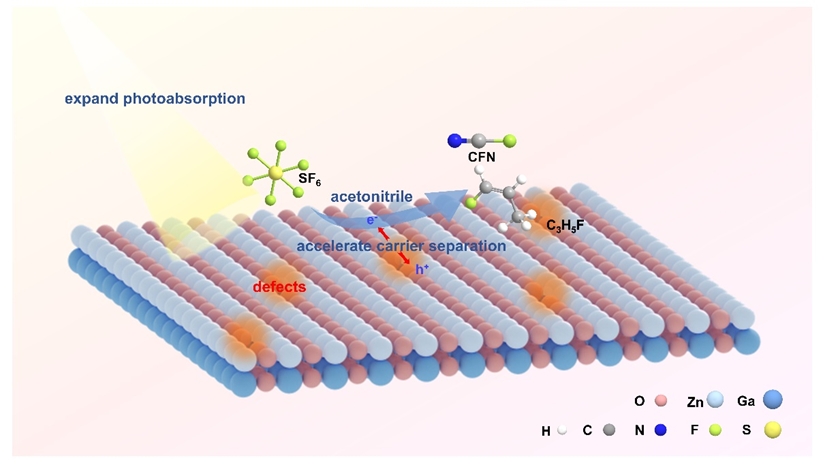《Sustain. Energy Fuels》: Boosted Photoconversion of SF6 over Defective ZnGa2O4 Nanosheets under Mild Conditions
Shan Zhu, Yue Zhao, Fengxiang Ma, Yue Yin, Weijia Shi, Feng Zhu, Wenya Fan, Peijin Du,* Jinyu Ding*
In the context of sulfur hexafluoride (SF6) photoreduction, the impact of defects has been shown to produce contradictory results. To address this, we have chosen to utilize two-dimensional materials as ideal models for our investigation. Owing to their high specific surface area and high atomic exposure ration, we can comprehensively assess how defects affect the three processes involved in SF6 photoreduction. We have successfully fabricated oxygen-deficient ZnGa2O4 nanosheets and confirmed their existence through electron spin resonance and X-ray photoelectron spectroscopy spectra. By examining UV-vis diffuse reflectance spectra, photoluminescence spectra, time-resolved fluorescence emission decay spectra, BET surface area tests, we have observed that the oxygen defects aids in expanding the capabilities of photoabsorption and facilitating carriers separation. Consequently, the oxygen-deficient ZnGa2O4 nanosheets demonstrate an enhanced SF6 photoconversion performance compared to the ZnGa2O4 nanosheets. In short, this research highlights the significance of introducing defects into photocatalysts to optimize the crucial photocatalytic steps, resulting in improved SF6 photoreduction performance.

Figure 1. Proposed schematic mechanism for SF6 photoreduction process over the defective ZnGa2O4 nanosheets, in which the defects help to expand photoabsorption, accelerate carrier separation process.
